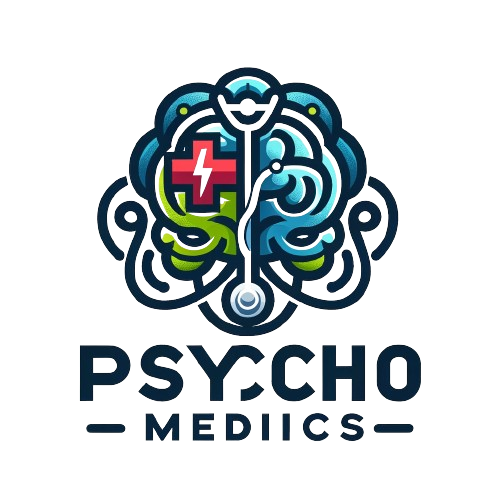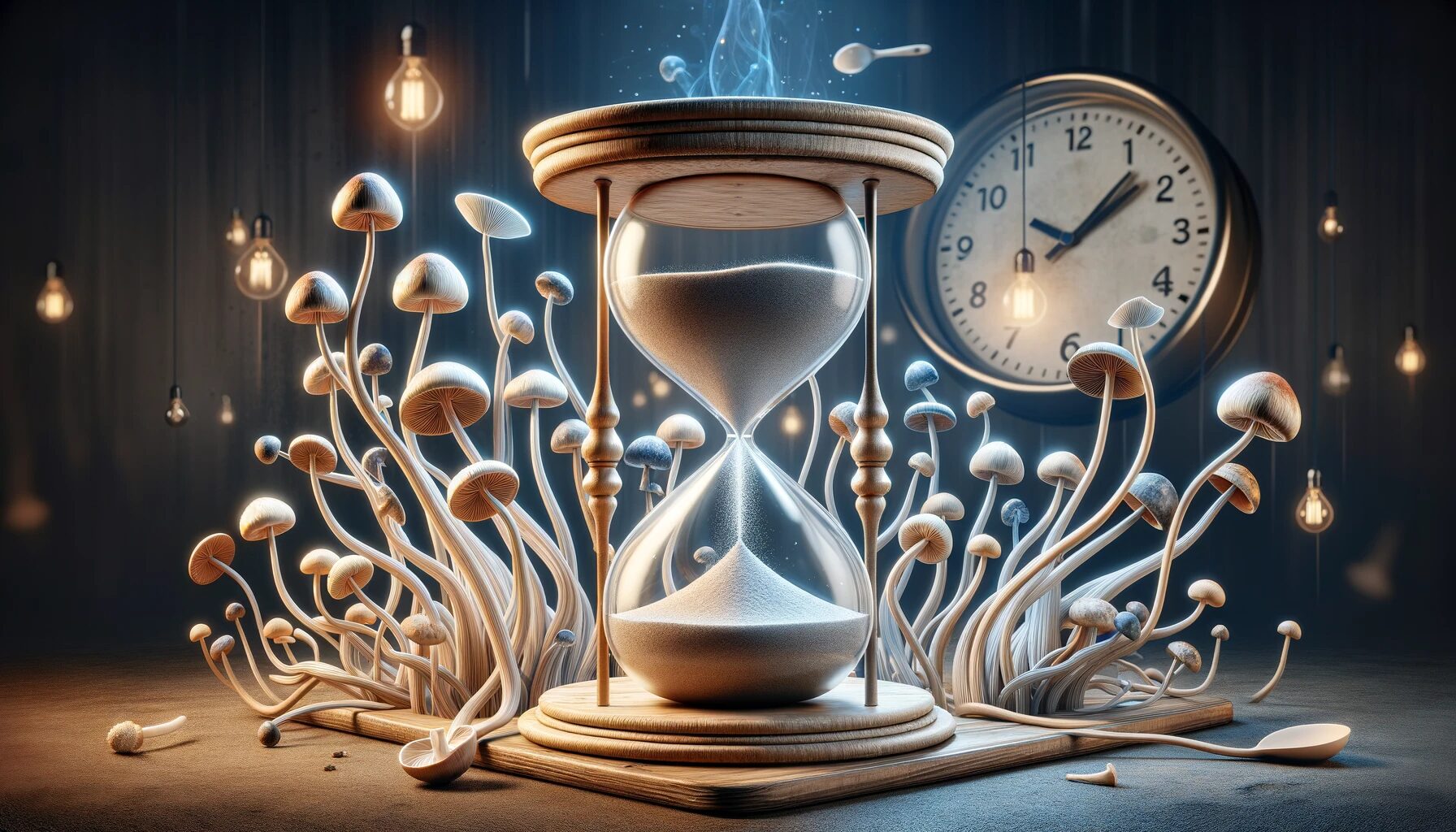Psilocybin, the psychoactive compound found in certain species of mushrooms, has gained widespread attention and fascination not only for its unique psychedelic effects but also for its potential therapeutic applications in the field of mental health. As societies around the world grapple with increasing rates of anxiety, depression, and post-traumatic stress disorder (PTSD), researchers and individuals alike are exploring unconventional avenues for relief. Psilocybin, derived from the “magic mushrooms” of the Psilocybe genus, represents one such avenue.
This compound has a rich history intertwined with human culture, used in indigenous rituals for centuries to induce altered states of consciousness and facilitate spiritual journeys. Today, it has captured the imagination of scientists, psychologists, and the general public, reigniting interest in its effects on the human mind and its potential to address mental health challenges.
However, before delving into the therapeutic possibilities and risks associated with psilocybin, it’s essential to answer a fundamental question: How long does psilocybin stay in your system? Understanding the duration of its presence in the body is critical for safe use, medical research, and legal considerations surrounding this intriguing compound.
What is Psilocybin?
Psilocybin is a naturally occurring psychedelic compound found in various species of mushrooms, commonly referred to as “magic mushrooms” or “shrooms.” It belongs to a class of substances known as hallucinogens, which can profoundly alter an individual’s perception, thoughts, and emotions when ingested. Psilocybin is renowned for its mind-altering properties and its capacity to induce vivid sensory experiences, often accompanied by feelings of profound introspection and connectedness.
The chemical structure of psilocybin is similar to that of serotonin, a neurotransmitter responsible for regulating mood, sleep, and various cognitive functions in the brain. When ingested, psilocybin undergoes a metabolic transformation within the body. It is enzymatically converted into another compound called psilocin, which is the active form responsible for the psychedelic effects.
Psilocin exerts its primary influence on the brain by binding to specific serotonin receptors, particularly the 5-HT2A receptor. This interaction with serotonin receptors disrupts the normal functioning of neural pathways, leading to alterations in sensory perception, mood, and consciousness. The resulting experience can range from visual hallucinations and synesthetic sensations (where one perceives sensory input in unconventional ways, such as “hearing” colors or “seeing” sounds) to profound shifts in one’s sense of self and reality.
How Psilocybin Works:
Psilocybin’s profound psychedelic effects stem from its interaction with the brain’s neural pathways and neurotransmitter systems. When ingested, psilocybin undergoes a series of transformations in the body, ultimately leading to the production of psilocin, the active compound responsible for the psychedelic experience.
- Metabolic Conversion: Upon ingestion, psilocybin is rapidly metabolized by enzymes in the liver into psilocin. This conversion is a critical step, as psilocin is the compound that interacts with the brain’s serotonin receptors to induce its effects.
- Serotonin Receptor Activation: Psilocin primarily affects the brain by binding to specific serotonin receptors, particularly the 5-HT2A receptor. Serotonin is a neurotransmitter that plays a crucial role in regulating mood, emotions, and various cognitive processes. By binding to these receptors, psilocin disrupts the usual flow of serotonin signaling, leading to alterations in neural communication.
- Disrupted Neural Pathways: Psilocin’s interaction with serotonin receptors results in the disruption of normal neural pathways and communication patterns. This disruption leads to a cascade of effects, including changes in sensory perception, mood, and cognition. Users often report vivid visual hallucinations, altered time perception, and enhanced sensory experiences.
- Neuroplasticity and Connectivity: Psilocybin appears to enhance neural plasticity, allowing the brain to form new connections and reorganize existing ones. This may underlie the profound introspective and insightful experiences reported by individuals during a psilocybin trip. It can lead to a sense of heightened introspection, emotional release, and profound insights into one’s thoughts and behaviors.
- Altered Sense of Self and Reality: Psilocybin can induce ego dissolution, where individuals may temporarily lose their sense of self and experience a feeling of interconnectedness with the world or the universe. This dissolution of the ego is often described as a transformative and spiritually significant experience.
- Duration and Variability: The effects of psilocybin typically begin within 30-60 minutes of ingestion, peak around 2-3 hours, and gradually subside over the course of 4-6 hours. However, the exact duration and intensity of the experience can vary widely among individuals and can be influenced by factors such as dosage, set, and setting (the individual’s mindset and environment), and personal sensitivity to the compound.
Factors Influencing Psilocybin Metabolism:
The metabolism of psilocybin, and consequently its effects on an individual, can vary based on several factors. Understanding these factors is important for predicting how long the substance will stay in the system and how intense the psychedelic experience may be:
- Dosage and Potency: The amount of psilocybin consumed plays a significant role in its metabolism. Higher doses lead to more psilocin production and a more intense trip. Individuals who consume larger quantities may experience longer-lasting effects.
- Individual Physiology: Each person’s body is unique, and factors like age, liver function, metabolic rate, and body mass can influence how quickly psilocybin is metabolized. For example, individuals with faster metabolisms may process the compound more rapidly.
- Frequency of Use: Regular users of psilocybin may develop a tolerance to the substance over time. This means that their bodies become more efficient at metabolizing it, potentially resulting in shorter-lasting effects. Conversely, occasional users may experience more prolonged effects due to their lower tolerance.
- Interactions with Other Substances: The concurrent use of other substances, including medications or drugs, can interact with psilocybin metabolism. These interactions can either potentiate or inhibit the effects of psilocybin, leading to variations in duration and intensity.
- Set and Setting: The user’s mindset (set) and environment (setting) can significantly influence the psilocybin experience. A positive and relaxed mindset, combined with a comfortable and safe setting, is more likely to result in a pleasant and manageable trip. Conversely, stress, anxiety, or a challenging environment may intensify the experience.
- Route of Administration: Psilocybin can be consumed in various forms, including dried mushrooms, and capsules, or brewed into a tea. The route of administration can affect how quickly the substance is absorbed and metabolized, leading to variations in onset and duration of effects.
- Genetics: Genetic factors can also play a role in how individuals respond to psilocybin. Variations in genes related to serotonin receptors and enzymes involved in psilocybin metabolism can lead to differences in the psychedelic experience.
- Biological Sex: Biological sex can influence psilocybin metabolism, as there may be variations in body composition, enzyme activity, and hormonal factors that affect how the substance is processed.
- Food Intake: Whether psilocybin is taken on an empty stomach or with food can impact its absorption and metabolism. Taking it on an empty stomach may result in a quicker onset of effects while consuming it with food can slow down the process.
Detection Times:
The duration for which psilocybin and its metabolites can be detected in biological samples depends on the type of sample tested and the sensitivity of the detection method. Here are the approximate detection times for psilocybin:
- Blood: Psilocybin is detectable in the blood shortly after ingestion and reaches peak levels within 1-2 hours. The detection window in blood is relatively short, typically up to 24 hours after consumption. However, the exact duration may vary depending on individual factors, including metabolism.
- Urine: Psilocybin and its metabolites are excreted through the urine. In urine tests, psilocybin can generally be detected for a slightly longer period than in blood, typically up to 24-48 hours after ingestion. Again, individual factors such as metabolism can influence the detection window.
- Hair Follicle Tests: Hair follicle tests are the most extended detection method for psilocybin. Psilocybin and its metabolites can be incorporated into hair strands as they grow. As a result, psilocybin can be detected in hair follicles for an extended period, often up to 90 days or even longer after use. The detection window in hair depends on the length of the hair sample taken and the rate of hair growth.
The Effects:
Psilocybin is renowned for its ability to induce a wide range of effects on an individual’s perception, thoughts, emotions, and sensory experiences. These effects can vary widely depending on factors such as dosage, set and setting (the individual’s mindset and environment), and personal sensitivity to the compound. Here is a closer look at the effects of psilocybin:
- Altered Perception: One of the hallmark effects of psilocybin is the alteration of sensory perception. Users often report enhanced colors, patterns, and distortions in their visual field. Everyday objects may appear to take on new and profound meanings, and individuals may experience synesthetic sensations, where one sensory modality blends into another (e.g., seeing sounds or tasting colors).
- Euphoria and Intense Emotions: Psilocybin can induce feelings of intense euphoria and emotional release. Users may experience heightened empathy, love, and a sense of interconnectedness with others and the natural world. Conversely, some individuals may also confront unresolved emotional issues or anxieties during their trip.
- Enhanced Creativity and Insight: Many users report experiencing heightened creativity and problem-solving abilities while under the influence of psilocybin. The altered state of consciousness can lead to profound insights and a fresh perspective on personal issues or challenges.
- Ego Dissolution: Psilocybin can induce a state known as ego dissolution, where individuals may temporarily lose their sense of self or identity. This dissolution of the ego can lead to feelings of unity with the universe or a sense of becoming one with all existence.
- Time Distortion: Users often report a distortion of time perception during a psilocybin trip. Moments may feel like hours, and the past, present, and future may seem interconnected or even irrelevant.
- Spiritual and Mystical Experiences: Psilocybin is known for its potential to facilitate spiritual or mystical experiences. Some individuals describe encounters with a higher power, a sense of transcendence, or a feeling of being in the presence of something sacred.
- Challenging or Negative Experiences: While many users have positive and enlightening experiences with psilocybin, others may encounter challenging or distressing emotions and visuals. These “bad trips” can include anxiety, paranoia, or a sense of impending doom. The set and setting, as well as the individual’s mental state, can significantly influence the nature of the experience.
- Physiological Effects: Alongside its psychological effects, psilocybin can also lead to physiological responses such as increased heart rate, blood pressure, and body temperature. These effects are typically mild and temporary. Please visit the Centers for Disease Control and Prevention (CDC) website for detailed information on public health guidelines.
Therapeutic Use and Research:
In recent years, there has been a resurgence of interest in the therapeutic potential of psilocybin, particularly for the treatment of various mental health conditions. While the recreational use of psilocybin-containing mushrooms has a long history, modern scientific research has shed new light on its potential benefits in controlled clinical settings.
Here are key points regarding the therapeutic use and research on psilocybin:
- Treatment of Depression and Anxiety: Clinical trials have shown promising results in the use of psilocybin-assisted therapy for individuals struggling with treatment-resistant depression and anxiety disorders. Psilocybin is believed to work by disrupting rigid thought patterns and allowing individuals to confront and process deep-seated emotional issues.
- Post-Traumatic Stress Disorder (PTSD): Research is underway to investigate the potential of psilocybin in helping individuals with PTSD. Preliminary studies suggest that psilocybin may assist in processing traumatic memories and reducing the emotional impact of past trauma.
- Addiction Treatment: Psilocybin has been explored as a treatment for substance use disorders, including alcohol and tobacco addiction. Some studies suggest that it may help individuals break free from addictive patterns and reduce cravings.
- End-of-Life Care: Psilocybin-assisted therapy has shown promise in providing relief to individuals facing end-of-life anxiety and distress. It can facilitate profound existential and spiritual experiences that help individuals come to terms with mortality.
- Neuroplasticity and Brain Connectivity: Psilocybin is thought to enhance neuroplasticity—the brain’s ability to reorganize and form new connections. This can lead to long-lasting changes in thought patterns and behaviors, which are particularly relevant in the treatment of mental health conditions.
- Regulatory Challenges: Despite promising results, psilocybin remains a Schedule I controlled substance in many countries, including the United States. This legal status presents challenges to conducting research and accessing psilocybin-assisted therapy for those in need.
- Psychedelic-Assisted Psychotherapy: Psilocybin is often administered in a therapeutic context under the guidance of trained therapists. These professionals help individuals navigate their experiences, provide emotional support, and ensure a safe and controlled setting.
- Patient Safety: While psilocybin-assisted therapy shows potential benefits, it is not without risks. Proper patient screening, dosing, and psychological support are essential to minimize the potential for adverse reactions or challenging experiences.
- Ongoing Research: Research on psilocybin’s therapeutic potential is ongoing, with numerous clinical trials and studies exploring its safety and efficacy. Organizations and institutions dedicated to psychedelic research are actively contributing to our understanding of its benefits and risks.
Conclusion:
Psilocybin, the psychoactive compound found in certain mushrooms, represents a fascinating intersection of ancient cultural traditions and modern scientific inquiry. As our understanding of this compound deepens, it becomes increasingly evident that psilocybin holds significant potential for therapeutic applications in the field of mental health.
The effects of psilocybin, which range from altered perception and ego dissolution to enhanced introspection and emotional release, have piqued the interest of researchers seeking innovative solutions to mental health challenges. Studies have shown promise in treating conditions such as depression, anxiety, PTSD, addiction, and end-of-life distress. Psilocybin’s ability to induce profound spiritual and existential experiences has the potential to transform how individuals approach and cope with these conditions.
FAQs
Q1: What is psilocybin?
A1: Psilocybin is a naturally occurring psychedelic compound found in certain mushrooms, often referred to as “magic mushrooms.”
Q2: How does psilocybin work in the body?
A2: Psilocybin is metabolized into psilocin, its active form, which interacts with serotonin receptors in the brain, leading to altered perception and mood.
Q3: What are the potential therapeutic uses of psilocybin?
A3: Psilocybin is being researched for its potential to treat depression, anxiety, PTSD, addiction, and end-of-life distress.
Q4: How long does psilocybin stay in the system?
A4: Psilocybin can be detected in blood for up to 24 hours, in urine for up to 24-48 hours, and in hair follicles for up to 90 days.
Q5: Is psilocybin legal?
A5: The legal status of psilocybin varies by country and region, with some places classifying it as a controlled substance.
Q6: Are there any risks associated with psilocybin use?
A6: Psilocybin can induce challenging experiences, and its use should be approached with caution, ideally under the guidance of trained professionals.
Q7: How can I access psilocybin-assisted therapy?
A7: Psilocybin therapy is typically conducted in clinical research settings and is not widely available for recreational use. Consult local regulations and healthcare providers for information.
Q8: What are the potential side effects of psilocybin?
A8: Side effects may include nausea, anxiety, paranoia, and perceptual disturbances, but these can vary among individuals.
Q9: Can psilocybin be addictive?
A9: Psilocybin is not considered physically addictive, and its potential for psychological dependence is low.
Q10: How can I learn more about psilocybin research and its legal status?
A10: You can find information on psilocybin research and its legal status by visiting government health department websites or consulting reputable sources in the field.

Alex is a seasoned writer and researcher, specializing in psychedelic studies and mental health. Known for insightful and authoritative content, he combines extensive knowledge with a passion for exploring wellness and alternative therapies. Alex’s work is a trusted resource for readers delving into the world of mental well-being.


Leave a Reply